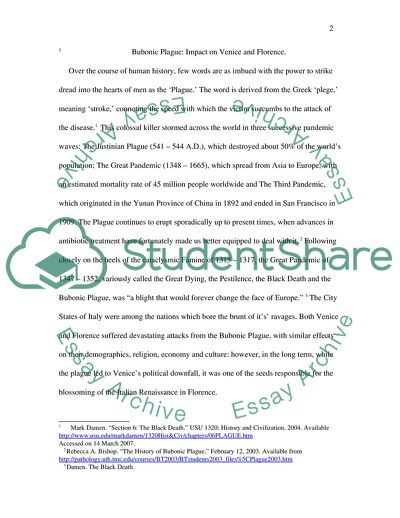Cite this document
(How Plague Influences and Changed the Lives in Venice and Florence Essay, n.d.)
How Plague Influences and Changed the Lives in Venice and Florence Essay. https://studentshare.org/history/1706645-a-comparison-of-the-impact-of-the-bubonic-plague-in-venice-and-florence
How Plague Influences and Changed the Lives in Venice and Florence Essay. https://studentshare.org/history/1706645-a-comparison-of-the-impact-of-the-bubonic-plague-in-venice-and-florence
(How Plague Influences and Changed the Lives in Venice and Florence Essay)
How Plague Influences and Changed the Lives in Venice and Florence Essay. https://studentshare.org/history/1706645-a-comparison-of-the-impact-of-the-bubonic-plague-in-venice-and-florence.
How Plague Influences and Changed the Lives in Venice and Florence Essay. https://studentshare.org/history/1706645-a-comparison-of-the-impact-of-the-bubonic-plague-in-venice-and-florence.
“How Plague Influences and Changed the Lives in Venice and Florence Essay”. https://studentshare.org/history/1706645-a-comparison-of-the-impact-of-the-bubonic-plague-in-venice-and-florence.


